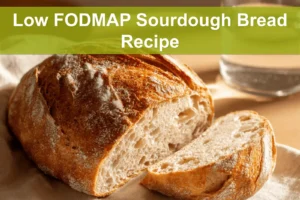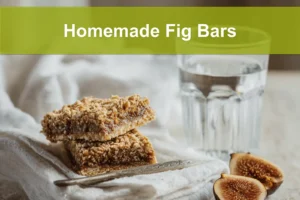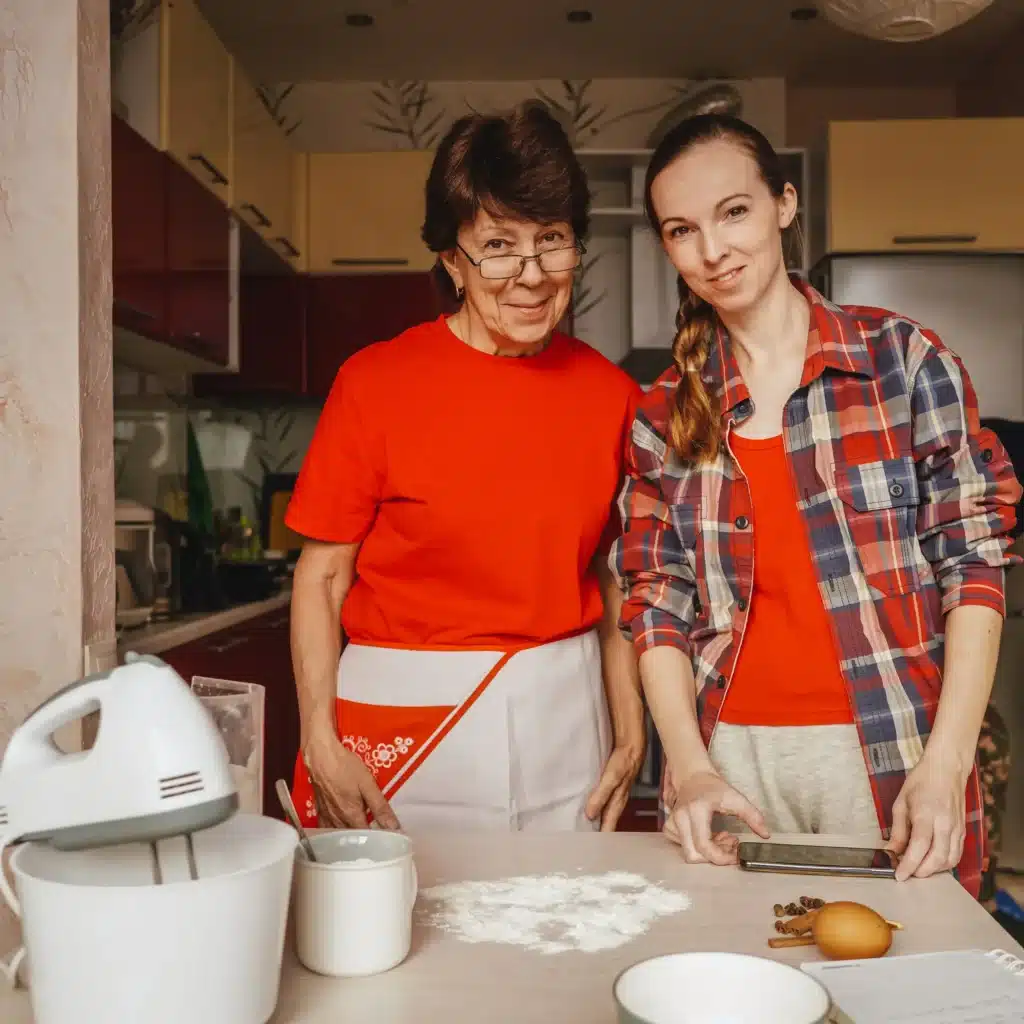Something about baking your first loaf of sourdough feels like a mix of magic and confidence building in the kitchen. This Beginner’s Sourdough Bread Recipe has gained popularity on platforms like Pinterest and Reddit for a reasonit’s beginner-friendly, comforting, and deliciously rustic. With just a bit of time and care, you’ll create a golden, crackly crust and a soft, chewy interior. All you need is an active sourdough starter, a little patience, and a quiet morning to let the dough do its work.
This loaf is crusty outside, soft inside, and made with only four ingredients: flour, water, salt, and sourdough starter. Truly pantry-friendly. Think of it like your grandma’s timeless baking wisdom, but with clear steps and no mysteries. The dough is forgiving, the instructions are straightforward, and the outcome? Perfect toasted with butter or jam. Full instructions below!
My sourdough journey began with my grandmother in a warm summer kitchen that always smelled like toast. I refined this version over many weekstesting hydration, adjusting timinguntil it became a go-to recipe: trustworthy, wholesome, and incredibly rewarding. And I have a little trick that gives this loaf an extra rise and a super tender crumb you’ll appreciate.
Why You’ll Love This Beginner’s Sourdough Recipe
This sourdough bread recipe is like a warm hug from the pastwith a dash of modern convenience mixed in. Designed for first-timers, it delivers a crusty exterior and chewy interior that tastes straight from the bakery.
- Simple ingredients: No specialty flours requiredjust everyday pantry essentials.
- Forgiving process: With gentle steps and room for error, it’s perfect even if it’s your first time with sourdough.
- Cozy nostalgia: Feels like baking with a grandparent who believes in youbecause this recipe is absolutely doable.
- Incredible flavor: The natural tang from fermentation makes every bite memorable.
Key Ingredients & What They Do
This beginner’s sourdough bread recipe keeps things delightfully simple. Here’s what every ingredient brings to the table:
| Ingredient | Purpose |
|---|---|
| All-Purpose Flour | Provides structure and elasticity. Versatile enough for beginner-friendly baking. |
| Sourdough Starter | This natural fermenting agent contains wild yeast and lactobacilli, helping the bread rise and give flavor depth. |
| Water | Initiates gluten development and activates fermentation. Use filtered or non-chlorinated water for best results. |
| Salt | Balances flavor and helps with gluten structure. Don’t skip it! |
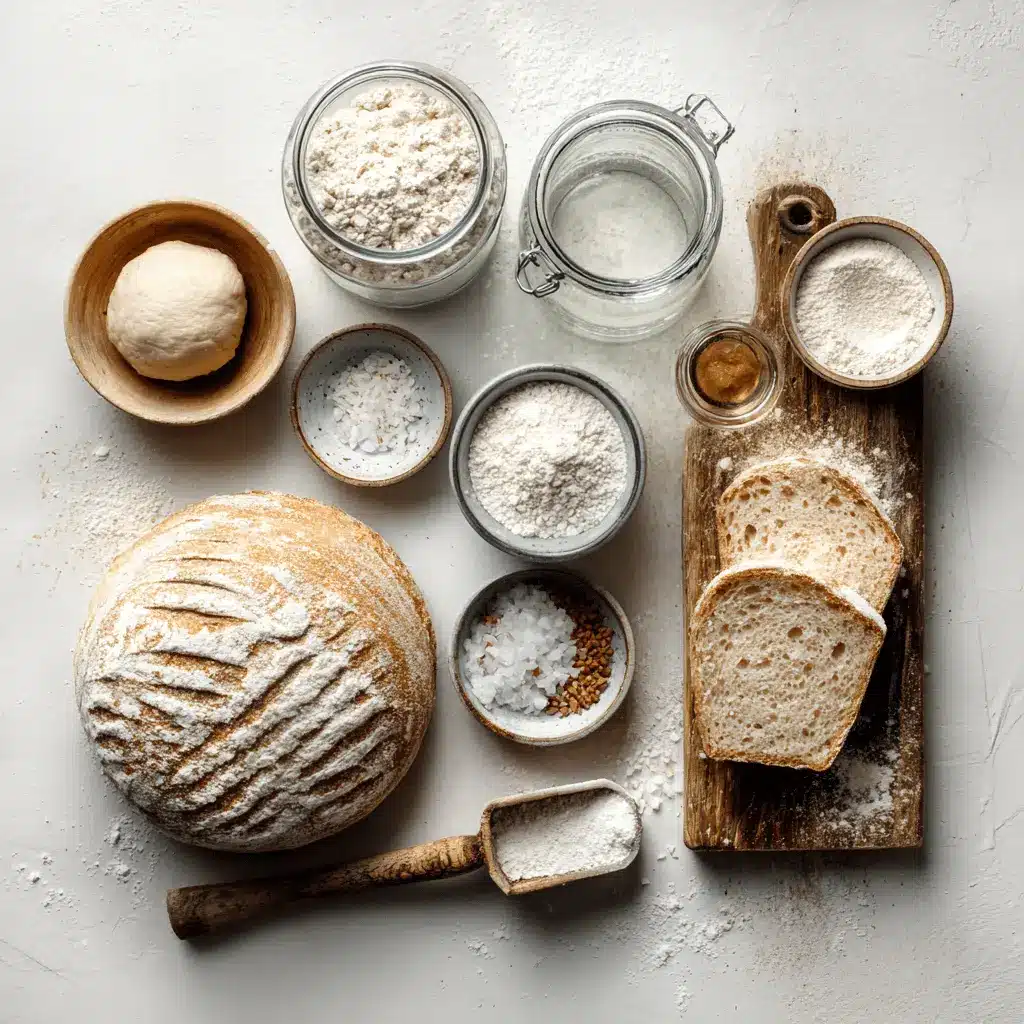
Note: Your sourdough starter should be activelook for bubbles and a pleasant tangy aroma. Feed it about 4–6 hours before starting your dough to get the best rise.
How to Make Sourdough Step-by-Step
The process of making sourdough bread isn’t difficultit’s just stretched out over time. Think of it as little actions spaced out with big resting breaks in between.
- Mix the Dough: In a large mixing bowl, stir together the sourdough starter, water, and flour until fully combined. Let it rest (autolyse) for 30 minutes to help gluten begin to develop.
- Add Salt: Sprinkle in the salt and gently knead or use a pinching method until the salt is fully incorporated. This strengthens the dough structure.
- Bulk Fermentation: Cover the dough and keep it in a warm, draft-free spot for 4–6 hours. Perform gentle stretch and folds every 30 minutes for the first 2 hours. This builds dough strength and improves final texture.
- Shape the Dough: Once the dough has expanded and feels airy, turn it onto a lightly floured surface. Shape gently into a round or oval loaf and place into a proofing basket or a bowl lined with a floured towel.
- Final Rise: Cover tightly and refrigerate overnight, ideally 10–12 hours. This slow cold proof enhances flavor and develops a crispy crust.
- Bake: Preheat your oven to 475°F (245°C) with a Dutch oven or heavy-lidded pot inside. Turn the dough onto parchment paper, score the top with a lame or sharp knife, and place it into the hot pot. Bake covered for 20 minutes, then remove the lid and bake another 20 minutes until the crust is deep golden.
| Step | Timing |
|---|---|
| Mix & Rest | 30 minutes |
| Bulk Fermentation | 4–6 hours |
| Shape & Final Rise | 10–12 hours (overnight) |
| Bake | 40 minutes |
Pro Tip: Use the “poke test”: gently press the dough with a floured fingerif it springs back slowly, it’s ready to bake.
Troubleshooting & Tweaks
Everyone’s kitchen and sourdough starter is unique. Here are common issues and helpful tweaks:
- Dough too sticky? Add a small dusting of flour during shaping. Avoid adding too muchstickiness is normal and helps create a better crumb.
- Not rising enough? Check that your starter is active and your environment is warm enough (70–75°F is ideal). Try longer fermentation if needed.
- Want a lighter crumb? Swap half the all-purpose flour with bread flour for extra gluten development and open structure.
Note: Sourdough is part science, part intuition. With repetition, you’ll learn your starter’s rhythm and small details that make a big difference.
Serving & Storage
This crusty sourdough loaf is best eaten fresh the day it’s baked, but it stays delicious with proper storage. Here’s how to keep it at its best:
| Storage Method | How Long It Keeps |
|---|---|
| Room Temperature (Wrapped) | 2–3 days in a bread bag or wrapped in a clean towel |
| Refrigerator | Up to 1 week; best if stored in a zip-top bag or airtight container, though crust may soften |
| Freezer | 2–3 months; wrap tightly in foil and a freezer-safe bag to prevent freezer burn |
Pro Tip: Slice bread before freezing. Toast frozen slices directly from the freezer to bring them back to life with fresh-from-the-oven texture.
Expert Insight: Mastering Your Beginners Sourdough Bread Recipe
Sourdough baking thrives on observation and timing. For beginners, succeeding with this beginner’s sourdough bread recipe means paying attention to dough feel, fermentation smells, and room temperature. As your sourdough sense sharpens, those simple ingredients transform into complex, rustic loaves every time.
For more delicious recipes and cooking inspiration, follow me on Facebook, Pinterest and Reddit!
Beginner’s Sourdough Bread Recipe: From My Kitchen to Yours
This beginner’s sourdough bread recipe came from months of experimentingfrom forgotten feedings to overly crunchy crusts. But after a dozen loaves and lots of smiles, I found the balance that works every time. This one has become a weekend ritual in our homewarm slices shared around the table with stories and jam.
FAQs ( Beginner’s Sourdough Bread Recipe )
How long does it take to make sourdough bread for beginners?
A beginner’s sourdough bread recipe typically takes 24-48 hours from start to finish, but most of this time is hands-off fermentation. Active work time is only about 30-45 minutes spread across mixing, folding, and shaping. The long fermentation is what gives sourdough its distinctive tangy flavor and makes it easier to digest than regular bread.
What do I need to start making homemade sourdough bread?
To make homemade sourdough bread, you’ll need an active sourdough starter, bread flour, water, and salt – that’s it! Essential tools include a large mixing bowl, kitchen scale for accurate measurements, and a Dutch oven for baking. Optional but helpful items are a bench scraper, proofing basket, and kitchen thermometer to monitor starter activity.
Can I use sourdough starter discard in this recipe?
No, this easy sourdough bread recipe requires active, bubbly sourdough starter that has been recently fed and doubled in size. Sourdough starter discard doesn’t have enough active yeast to properly leaven bread. However, you can use discard for pancakes, waffles, or crackers – save it in the fridge for other delicious recipes!
Why is my first sourdough bread dense or flat?
Dense sourdough bread usually happens because the starter wasn’t active enough, the dough was under-fermented, or it was over-proofed. Make sure your bread starter doubles in size within 4-8 hours after feeding before using it. This beginners bread recipe works best when you follow the timing closely and watch for visual cues like dough doubling in size.
How do I know when my sourdough bread is done baking?
Your artisan bread is done when it sounds hollow when tapped on the bottom and reaches an internal temperature of 205-210°F. The crust should be deep golden brown and feel firm to the touch. Don’t skip the cooling step – let your homemade sourdough bread cool completely for at least 1-2 hours before slicing for the best texture and flavor.
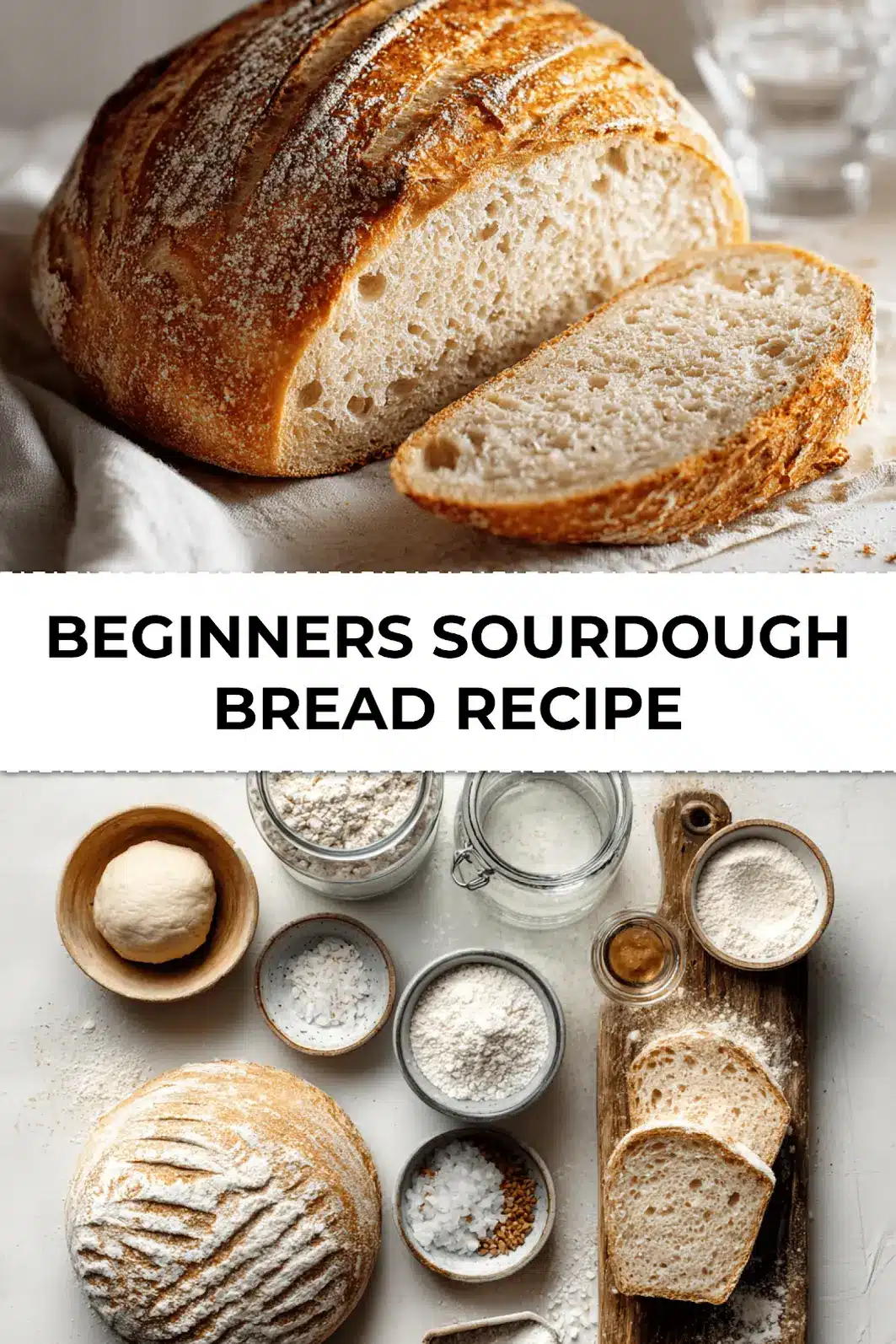
Conclusion
This Beginner’s Sourdough Bread Recipe is a heartwarming way to bring fresh baking into your weekly routine. With mostly hands-off time, you’ll create a crusty, golden loaf ideal for breakfasts, sandwiches, or simple snacks. It’s a beautiful reminder that good things take timeand patience pays off.
Personalize your bake with herbs, everything-bagel topping, or sunflower seeds. Want extra flavor? Swap some water for milk or olive oil. And don’t forget: slice and freeze any leftovers so you can wake up to fresh homemade toast all week long. Simple, soulful baking is always in style.
Do you have a sourdough success story or starter name? Tag me with your creationslet’s keep these oven memories rising together. Happy baking!
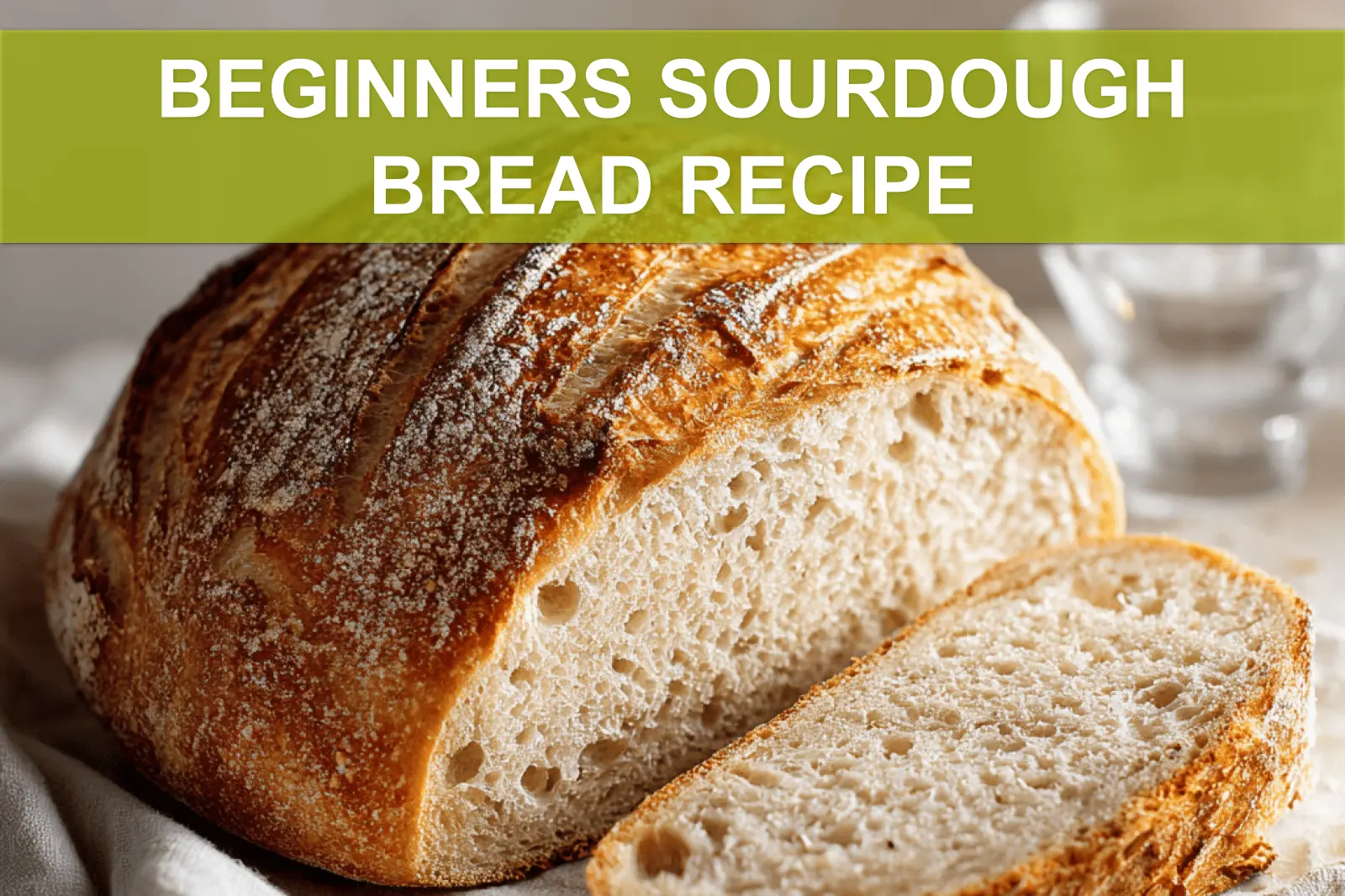
Beginner’s Sourdough Bread Recipe: Easy and Delicious Steps
Ingredients
Method
- In a large bowl, combine the sourdough starter and water. Mix until the starter is dissolved.
- Add the all-purpose flour and salt, then stir until a shaggy dough forms.
- Cover the bowl with a clean towel and let it rest (autolyse) for 30 minutes.
- After resting, knead the dough gently on a floured surface for about 5-10 minutes until smooth and elastic.
- Place the dough back in the bowl and cover it. Let it ferment at room temperature for 4-6 hours, folding the dough every hour to strengthen the gluten.
- After bulk fermentation, shape the dough into a tight round loaf.
- Place the shaped dough into a floured proofing basket or bowl, cover, and refrigerate overnight (12-16 hours) for slow fermentation.
- Preheat your oven to 450°F (230°C) with a Dutch oven or baking stone inside.
- Carefully transfer the dough onto parchment paper, score the top with a sharp knife.
- Place the dough with parchment inside the preheated Dutch oven; cover and bake for 20 minutes.
- Remove the lid and bake for an additional 20 minutes until the crust is deep golden brown and crisp.
- Remove the bread from the oven and cool on a wire rack before slicing.
Notes
- For best results, ensure your sourdough starter is active and bubbly before starting. You can store leftover bread in an airtight container for up to 3 days or freeze for longer storage. Experiment with whole wheat flour for a nuttier flavor.

